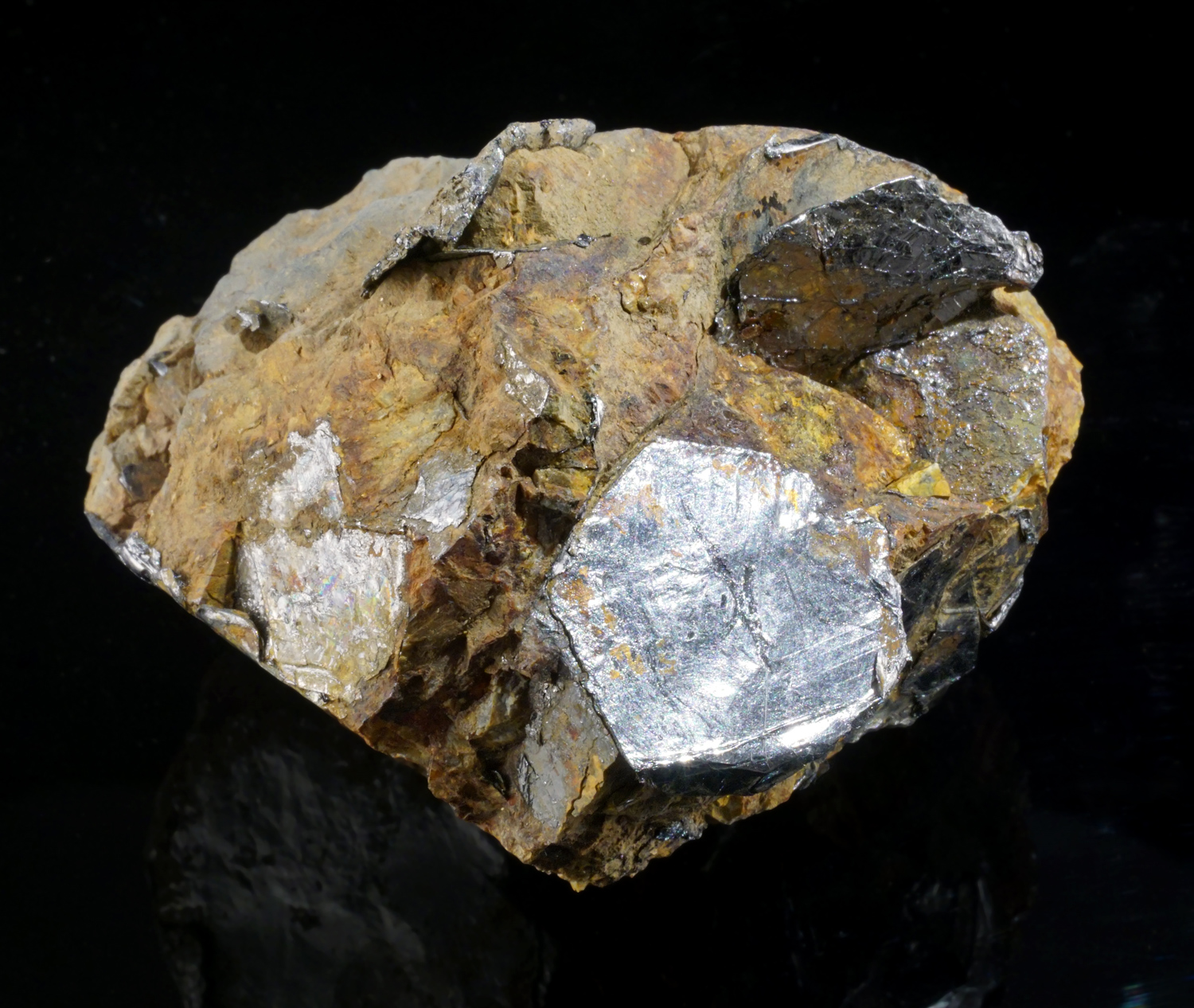The Mineral graphite

Graphite is a mineral composed exclusively of the element carbon. Graphite has the same chemical composition as Diamond, which is also pure carbon, but the molecular structure of Graphite and Diamond is entirely different. This causes almost opposite characteristics in their physical properties.
Graphite is rather common mineral, but fine crystals are rare. Most Graphite mining areas produce enormous quantities from a single or several large Graphite
veins, but collector specimens in good crystals are not commonly encountered.
Much care should be given to Graphite specimens, especially thin crystals, which are fragile. It may be difficult to wash crystals, as they easily peel off and get ruined. Graphite will also smudge on its surface, and can get worn out if it is moved around too much. It also smudges the hand when handled, and will smudge a label or cardboard box if stored in one.
Color
Silver-gray to black
Properties
Streak
Black |
Hardness
1 - 2 |
Transparency
Opaque |
Specific Gravity
1.9 - 2.3 |
Luster
Metallic |
Cleavage
1,1 - basal |
Fracture
Conchoidal |
Tenacity
Brittle; thin flakes are flexible |
Other ID Marks
1) Has a greasy feel.
2) Smudges the hands when touched.
3) Good conductor of electricity (though a poor conductor of heat). |
Uses
Much of the commercially mined Graphite is used for pencil fillings. The "lead" filling in pencils is in fact composed of a mixture of Graphite and clay. Graphite's main function, however, is as a lubricant. It has many electrical uses, primarily because it is the only common nonmetal that is a good conductor of electricity.
Noteworthy Localities
Although Graphite is not particularly rare, good Graphite crystals are uncommon. Well-known worldwide localities for Graphite are Pargas, Finland; Mount Vesuvius, Italy; Borrowdale, Cumbria, England; and Mont Saint-Sauveur, Quebec, Canada. The Merelani Hills of Arusha, Tanzania, has produced sharp crystal plates that are associated with Diopside and Garnet.
In the U.S., extensive commercial Graphite deposits exist in Ticonderoga, Essex Co., New York, and in Clay Co., Alabama. Graphite as small flakes and plates is common in the Franklin Marble Belt, specifically at Amity, Orange Co., New York, and across the state border at Franklin, Ogdensburg, and Sparta, Sussex Co., New Jersey. Crystal masses and large plates have also come from the Hudson Highlands region, especially near Stony Point, Rockland County, New York. A new, significant find of this mineral is Rossie, St. Lawrence Co., New York. Graphite crystal flecks have been found at the French Creek mine Chester Co., Pennsylvania; at Bisbee, Cochise Co., Arizona; and at Crestmore, Riverside Co., California.
Distingushing Similar Minerals
There are quite a number of minerals similar in appearance to Graphite, but Graphite's intrinsic properties will easily distinguish it. Molybdenite, which is commonly confused with Graphite, is heavier and does not smudge.